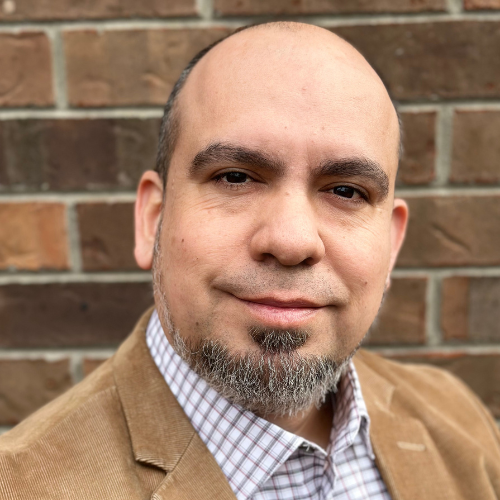Commentary on Luke 17:11-19
This passage follows the trajectory of geography, healing, and faith, pointing to the theme of reversal (or inversion) that is central in Luke and in much of the gospels (think of “the last shall be first and the first last,” Matthew 20:16). These are situations where a person or group’s social status (physical, economic, political, religious) is reversed because of an encounter with Jesus. Often it has to do with someone who is incredibly marginalized, isolated, and even condemned because of their condition (the blind beggar in Luke 18:38; the penitent criminal in 23:42).
Through a face-to-face experience with Jesus where they are seen, heard, received, and sent, they obtain a kind of transformative and complete healing (liberation, in a real sense) that seemed impossible beforehand. Whether blindness or illness, abject poverty, or criminality, walking with Jesus in the way provides an all-encompassing healing that reflects God’s vision of justice, wellness, and belonging for all of humanity. A preacher seeking to proclaim this text in its fullness can take on this idea of healing justice in several ways explored here.
Geography and beyond: The borderlands as a thin place
Geography matters. Verses 17:11-12 in Luke state that Jesus, on the way to Jerusalem, “passed through the midst of Samaria and Galilee,” and “entered into a certain village.” This means that this entire healing encounter between Jesus and the ten men with a skin disease takes place in a geographic borderland that is neither Samaria nor Galilee. The borderlands—we learn from Chicana writer and activist Gloria Anzaldúa, whose context is the U.S.-Mexican border—are more than a geographic boundary. They are “a psychic, social, and cultural terrain that we inhabit, and that inhabits all of us.” She writes that while borders “are set up to define the places that are safe and unsafe, to distinguish us from them … ” a “borderland is a vague and undetermined place created by the emotional residue of an unnatural boundary … the prohibited and forbidden are its inhabitants.”1
Anzaldúa’s words help us understand why Luke places this healing encounter in a hybrid space that transcends not only geography but also culture, religion, economics, and politics. Despite the reference to Jerusalem, which points to the place where Jesus and his movement will face the ultimate earthly powers of his time, this passage centers on the borderlands of the empire. That healing happens in this locale should not be ignored; Luke is saying something theological about how this God of great reversals works, and Jesus reflects this attention to the margins in his ministry. The healing encounter between Jesus and the ten men with a skin disease, a condition that relegated them to a life of physical and mental suffering and isolation, and economic deprivation as a result, converts the borderlands between Galilee and Samaria from a forbidden wasteland to a sacred place, perhaps even a thin place where the veil between the material and spiritual worlds is lifted, and an awareness of their interconnection is more deeply known and felt.
This is all possible because Jesus is the ultimate border-crosser. He models for us a prophetic-pastoral ministry that continuously shifts the focus away from the people and places that are typically held as sacred and worthy and reframes the margins as places where God shows up in healing and liberative power.
Healing is not a spectator sport
In addition to the role that geography plays in the healing acts of Jesus, another critical aspect of this story has to do with the agency of the ten men seeking healing. In this passage as in nearly all healing stories in the gospels, those being healed are not mere receivers of Jesus’ healing powers. They are co-participants in their own healing. Biblical scholar Mikeal Parsons notes that the ten men seeking healing in this passage are among only three characters in the Luke narrative (recall the earlier reference to the blind beggar and the penitent criminal) that call Jesus by his name “Jesus.”2 They also call Jesus “Master” (verse 13), something usually only reserved for disciples.3 Despite not knowing Jesus personally (for this seems to be a chance encounter with him), they readily approach him with a faithful and expectant posture, as if they could sense that their healing was at hand in Jesus’ presence.
There’s a powerful connection here to explore further in a sermon between the act of being seen and heard by Jesus, and in seeing and speaking up to Jesus. Healing takes place not by some miracle, but by an act of mutual agency—divinely grounded—leading to authentic human connection. Moreover, in their courage to show up for themselves these men are not only healed from their skin disease but also from the social isolation and marginalization that they had suffered in the borderlands. Jesus affirms the role of the one man (the Samaritan, whom we’ll return to later) as a catalyst in his own healing by saying to him “your faith has made you well (verse 19).” In today’s ongoing pandemic context, where anxiety, depression and other related illnesses are running rampant, it is no wonder that doctors are increasingly prescribing social activities, walks in nature, and other non-traditional forms of medical treatment that require active patient engagement.4 A just and comprehensive healing cannot happen in isolation—it requires direct participation and community.
Listening to the faith of the borderlands
Given the theme of reversal in Luke, the fact that a Samaritan participates in God’s healing justice, offering praise to God and gratitude to Jesus should not surprise us. As this story challenged people in Luke’s time to expand their understanding of who is worthy, who has access to God, and who can claim healing in the name of God, it should also challenge us to think outside of the norms of dominant religious contexts today. In the wake of rising White Christian nationalism5, Christians of conscience must actively resist supremacist interpretations and practices and listen to the many faiths of the borderlands that cry out for recognition and redemption, to restore the spirit of compassionate justice that is at the heart of Jesus’ teachings.
Notes
- Gloria Anzaldúa, Borderlands/La Frontera: The New Mestiza (San Francisco, CA: Aunt Lute Book Company, 1987), 3.
- Mikeal Parsons, “Luke 17:11-18:30, Jesus’s Teaching about the Kingdom,” in Luke, Padeia, Commentaries on the New Testament, edited by Mikeal Parsons et al. (Grand Rapids, MI: Baker Academic, 2015), 257.
- Parsons, Ibid.
- Rachel Chen, “Why Some Doctors Are Prescribing Ballroom Dance or a Day at the Museum,” in Time https://time.com/6187850/social-prescriptions-improve-health/, June 25, 2022, accessed September 5, 2022.
- Mike Cummings, “Yale sociologist Phil Gorski on the threat of white Christian nationalism,” in YaleNews, March 15, 2022, accessed September 5, 2022.


October 9, 2022